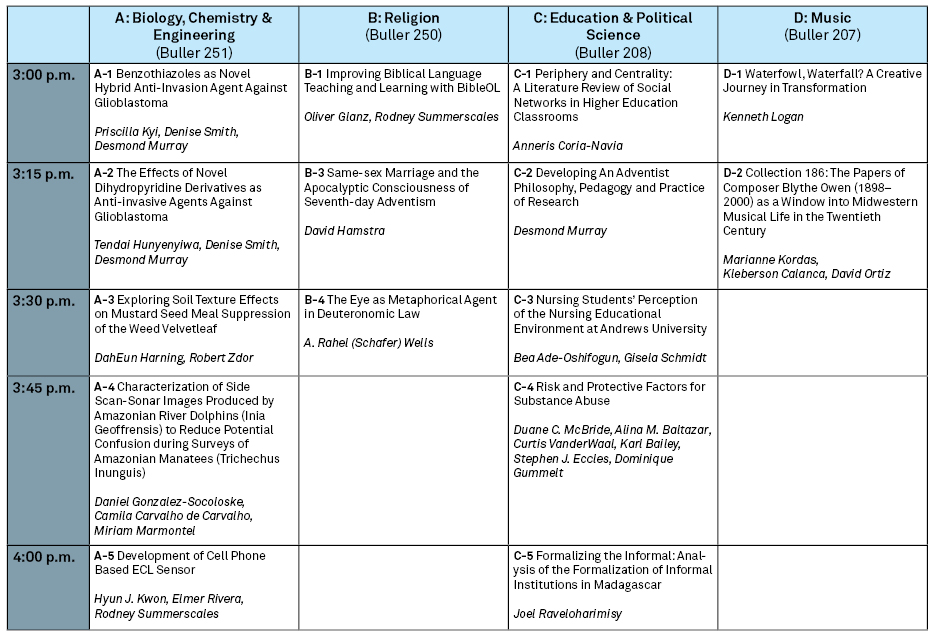A-3 Exploring Soil Texture Effects on Mustard Seed Meal Suppression of the Weed Velvetleaf
Presenter Status
Honors student, Department of Biology
Second Presenter Status
Professor of Biology, Department of Biology
Preferred Session
Oral Session
Start Date
26-10-2018 3:30 PM
End Date
26-10-2018 3:45 PM
Presentation Abstract
The use of mustard seed meal (MSM) as a biofumigant in managing weeds in agricultural settings has been well documented. However it has been suggested that soil types may differ in their ability to foster the deleterious effects of the meal on undesirable plants. Work with MSM in altering velvetleaf seedling soil growth has shown that certain soils were better suited for weed suppression than other soils. The most effective soils had elevated levels of sand in comparison to less effective soils. Furthermore enriching the sand content in soil resulted in reduced seed germination and growth. It is hypothesized that elevated sand content in soil creates air spaces resulting in the effective diffusion of inhibitory volatile MSM compounds throughout the soil and maximizing seed/seedling contact with these compounds. In contrast soil mixtures with elevated silt/clay content should result in less weed inhibition by MSM due to reduced diffusion of volatiles. Experimental results testing this prediction will be discussed.
A-3 Exploring Soil Texture Effects on Mustard Seed Meal Suppression of the Weed Velvetleaf
The use of mustard seed meal (MSM) as a biofumigant in managing weeds in agricultural settings has been well documented. However it has been suggested that soil types may differ in their ability to foster the deleterious effects of the meal on undesirable plants. Work with MSM in altering velvetleaf seedling soil growth has shown that certain soils were better suited for weed suppression than other soils. The most effective soils had elevated levels of sand in comparison to less effective soils. Furthermore enriching the sand content in soil resulted in reduced seed germination and growth. It is hypothesized that elevated sand content in soil creates air spaces resulting in the effective diffusion of inhibitory volatile MSM compounds throughout the soil and maximizing seed/seedling contact with these compounds. In contrast soil mixtures with elevated silt/clay content should result in less weed inhibition by MSM due to reduced diffusion of volatiles. Experimental results testing this prediction will be discussed.




Acknowledgments
This work was financially supported by the Office of Research and Creative Scholarship at Andrews University.